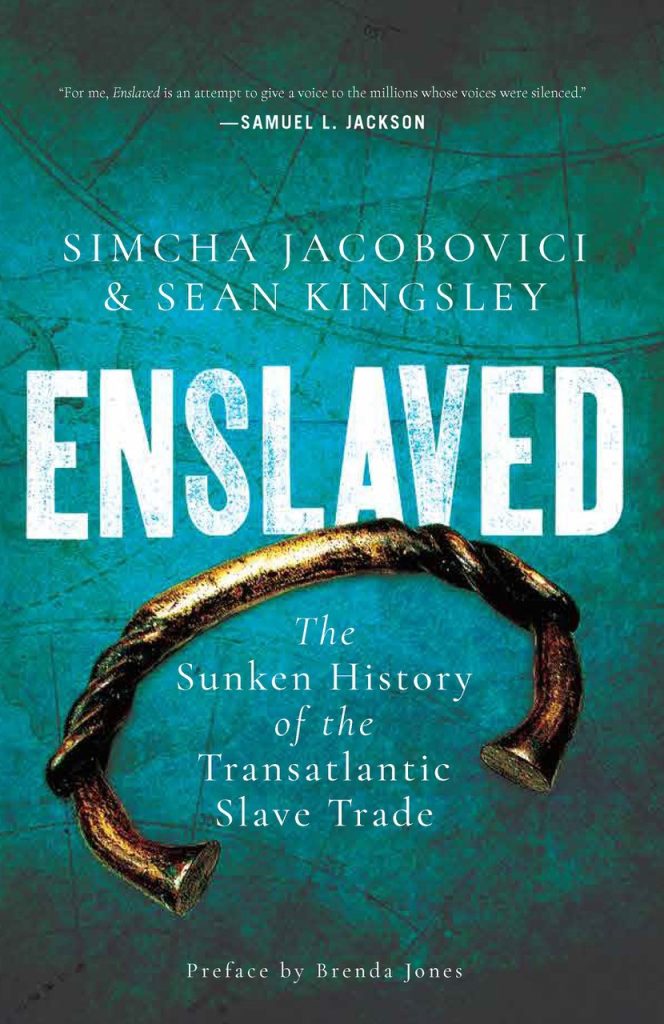By Terri Schlichenmeyer
A good story requires lots of switchbacks.
It’s boring if it moves too smoothly without a hitch. No, you need a detour or two, a couple of switchbacks, a pothole in the road to make the story interesting, and a good meander to smooth it out. Even so, as in the new book “Enslaved” by Simcha Jacobovici & Sean Kingsley, sometimes, the story is a wreck.
Were it not profitable – if it hadn’t been for the money in it – “the transatlantic slave trade would never have happened,” say the authors in the first sentence of their book. This fact launches a tale of high seas, low tides, and the people of Diving With a Purpose who volunteer their talents to find former slave ships that lie beneath the ocean. This work helps tell the stories of ancestors who died beneath the waters, victims of the slave trade.
 Jacobovici and Kingsley start out with a tale of three divers, “a story they did not want to hear. And… a dive to a haunted slave wreck they did not want to dive” in Paramaribo, a port city in Suriname. There, 664 Africans were purposely locked in the hold of a sinking ship for reasons that the ship’s captain kept to himself.
Jacobovici and Kingsley start out with a tale of three divers, “a story they did not want to hear. And… a dive to a haunted slave wreck they did not want to dive” in Paramaribo, a port city in Suriname. There, 664 Africans were purposely locked in the hold of a sinking ship for reasons that the ship’s captain kept to himself.
Just off the coast of Gibraltar, the site known as 35F was an accidental find discovered by treasure hunters. At first DWP workers weren’t sure there was anything left of the shipwreck; it had been destroyed by area trawlers and fishermen. A second look showed cannons, ceramic pots, ivory, and copper bracelets called “manilla,” that were used “to buy gold, elephant tusks, and humans.”
And then there was the Clotilda, a ship that was illegal from the start, and was sunk on purpose in a small waterway. Today, many descendants of its survivors live in a “sleepy” town near Mobile, Alabama, a “purely African town in America” founded by former slaves, “started from scratch…”
Many thoughts may swirl around your head when you read “Enslaved.”
The first is that there’s something to learn everywhere, but also a good amount of information that you already know. It’s filled with powerful stories, but they’re written in sometimes-florid language that can make those tales hard to follow. And some of the tales will make you wince and cringe and cringe again.
Authors Jacobovici and Kingsley weave history inside tales of recovery, which is helpful in an overall understanding of slavery around the world, beginning well before 1619 and including how it came to be that Africans were the people most captured. There are times, however, when that history gets in the way of DWP’s fascinating involvement – what they found, how it was discovered, what was done with the information, and how it matters. It’s easy to miss those parts of this book, and that’s too bad.
This book will satisfy readers who want history, but armchair archaeologists may be left wanting. Come at “Enslaved” with that in mind: devour it, perhaps, or switch it out and put it back.




